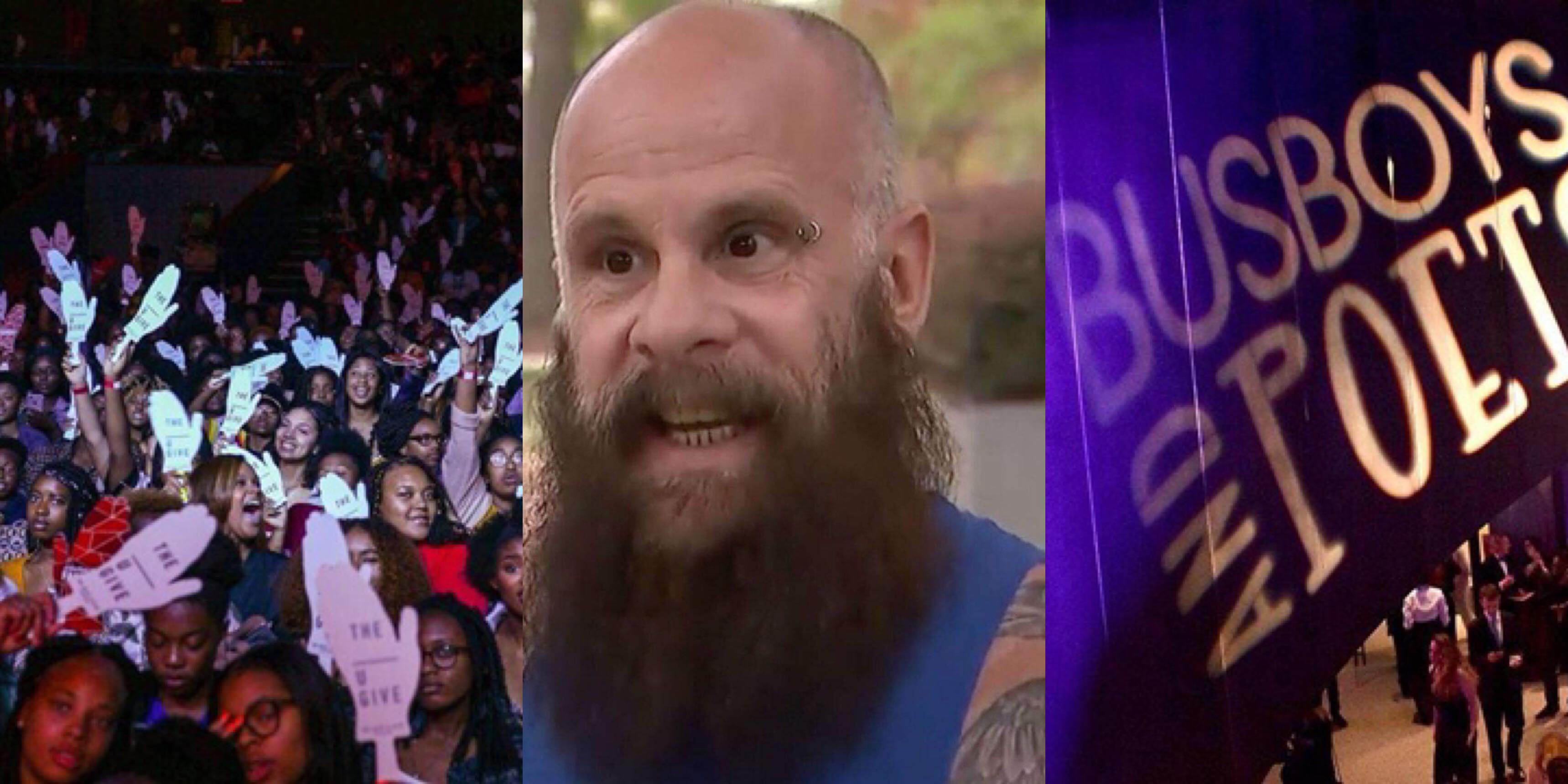Washington, D.C. residents don't need census data to remind them what's evident in their neighborhoods: the city is changing dramatically and certain landmarks that bring life to the Chocolate City have now been replaced with farm-to-table eateries and artisanal coffee shops bearing the same assortment of cold brew.
According to DCist, D.C. experienced the highest percentage of gentrifying areas across the United States between 2000 and 2013. Unfortunately, that statistic has affected the Black population as well. The publication also added the D.C. population used to be 71.1% Black in 1970. By 2015, that number dropped to 48.3%.
This is cause for concern.
On two separate recent occasions, white people deemed it necessary to encroach on established customs made popular by D.C.'s Black audience. First it was the fake outcry of go-go music being played outside of Metro PCS. Then on Friday, one gentrifier suggested the 150-year-old Howard University campus up and "move" so he can walk his dog.
Despite both (unsuccessful) attempts at staking claim where no one asked them to, there are other landmarks in and around Washington that refuse to be taken down by translucent visitors. Here are five places in Chocolate City, in addition to the Mecca, that, try as they might, white people will ultimately fail in trying to assert their dominance over.
Howard Theatre
The famed Howard Theatre opened its doors in 1910 and has since become a mainstay of the Shaw neighborhood. A venue for Black entertainers who were outlawed from performing in white spaces, the Howard Theatre captivated audiences with musicals, vaudeville acts, theater productions and local programs. Per the venue's website, D.C. native Duke Ellington popularized a renaissance of jazz big bands on The Howard’s stage.
Source: Getty Images
More than a century later, The Howard Theatre continues to serve as a sanctuary for Black performers and allies to enjoy the music, plays and acts unique to our culture.
Marvin DC
Located on 14th St., Marvin is a spot rooted in unification since its 2007 inception. Owner Eric Hilton credits Marvin Gaye's self-inflicted period of banishment in Belgium as inspiration for his popular lounge. The late singer traveled to parts of the European country in 1981, using those months abroad to meditate. Consequently, that brought a broader sense of creativity to the D.C.-born crooner upon his return.
Source: Getty Images
Marvin pays homage to those pivotal years of Gaye's career, and Hilton's carefully crafted menu is a fusion of both the foods indigenous to the Shaw district and the Belgian fare the "What's Going On" singer sampled abroad.
Busboys and Poets
Grounded on inspiring social change, Busboys and Poets is a functioning library and restaurant in one. It's truly a refuge for D.C.'s minority population. Busboys and Poets refers to Missouri-born poet Langston Hughes, who worked as a busboy at the Wardman Park Hotel back in the 1920s, years before his poetry catapulted him to fame.
Source: Getty Images
In addition to featuring books written by local authors and national figures, Busboys and Poets holds in-house series across their restaurants. These programs touch a bevy of topics, from race to organized labor to LGBTQ issues. Despite what may be occurring outside the doors of the storied eatery, there's always a feeling of inclusion inside.
U. St. Corridor Murals
No doubt D.C. has some of the finest art galleries filled with an assortment of beautiful paintings. However, there's nothing like promenading around the alley ways down U. St. to find some of eye-catching and colorful works of art. Portraits of America's first Black family and the late Prince adorn one portion of a wall, and on the other side revered comedian and Washington native Dave Chappelle covers a sizable area.
Source: Instagram/Marvin's DC
According to MuralsDC Project, there are currently 85 murals that spread across 46 neighborhoods in the District. The idea to illustrate the city's history began in 2007 as a way to combat illegal graffiti. Now, it's grown to . be a powerful display of Chocolate City's roots.
Malcolm X Park
One of the nicest and under-appreciated parks in D.C. is a place formally called Meridian Hill Park but known to locals as Malcolm X Park. The park is 12 acres of open space that sit on a hill overlooking downtown and the National Mall. Malcolm X Park boasts some impressive Black history facts, which proves how significant the structure is to D.C. culture. Dr. Martin Luther King Jr reportedly frequently visited the park on his trips to Washington, as the activist was a favored guest at the Pitts Motor Hotel next door.
Source: Getty Images
A tradition since the 1950s Malcolm X Park hosts the country's largest and longest continuing drum circles, where visitors can congregate every Sunday at 3 p.m. and dance to the troupe's beats.
There's plenty more to Washington, D.C. than dog parks and white elites who trespass on the safe spaces long created, established and celebrated by the Black community. The culture may be recently saturated with mediocre variations of avocado toast, but residents are now more than ever making sure that D.C.'s history won't be overrun by those who want to turn Chocolate City into a suburban purgatory.
Now, check these out:
Black Former Fox News Anchor Sounds Off On 'Racist' Network
Flint Will Receive $77 Million In Loans To Help Resolve 5-Year Water Crisis
Home Depot Is Bringing Home Improvement To Ten HBCU Campuses






